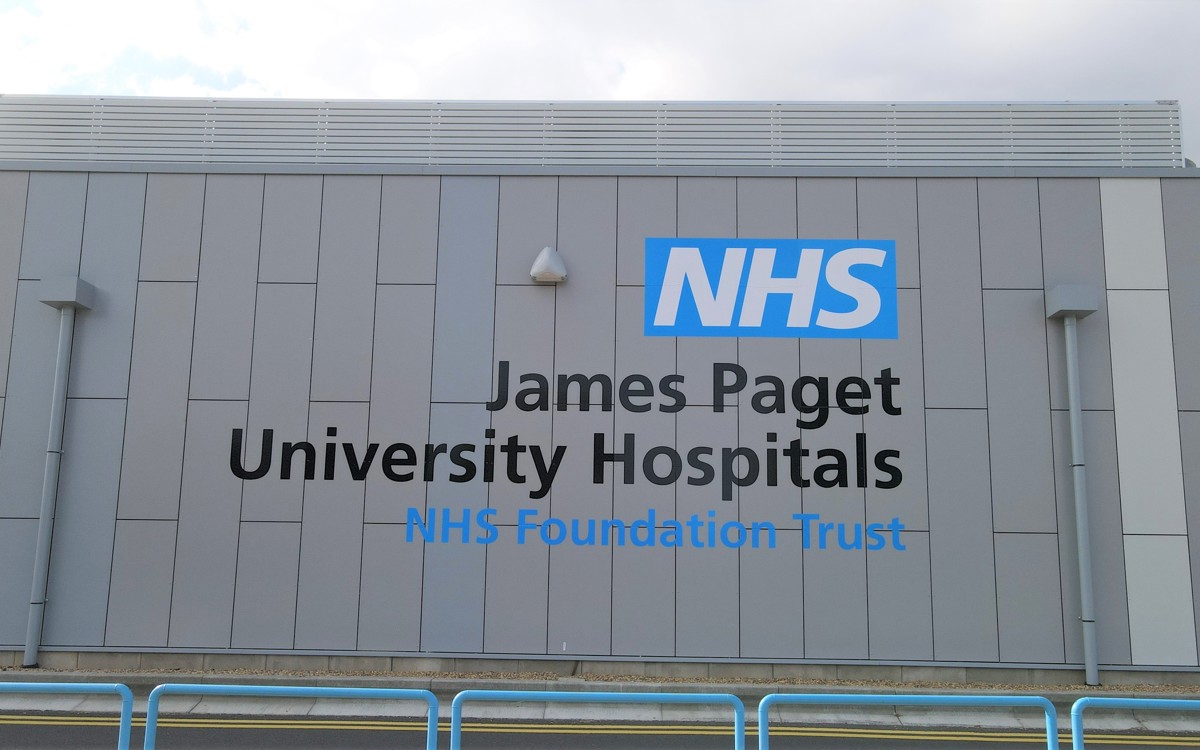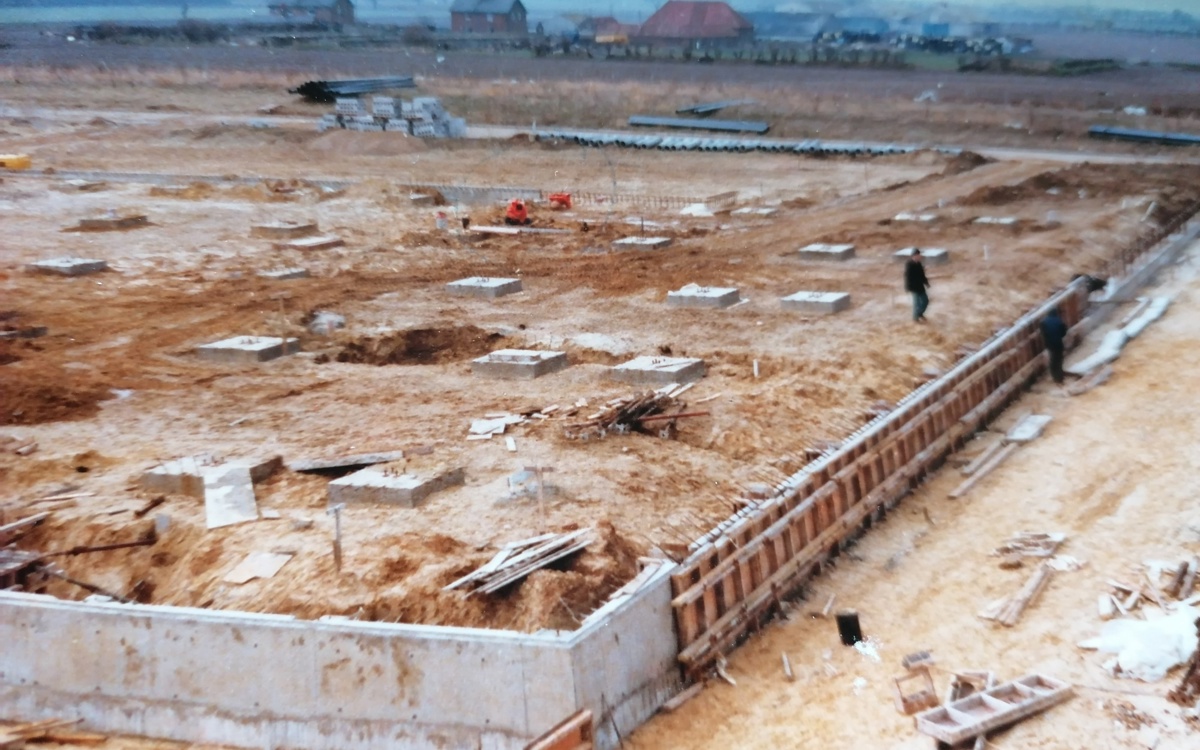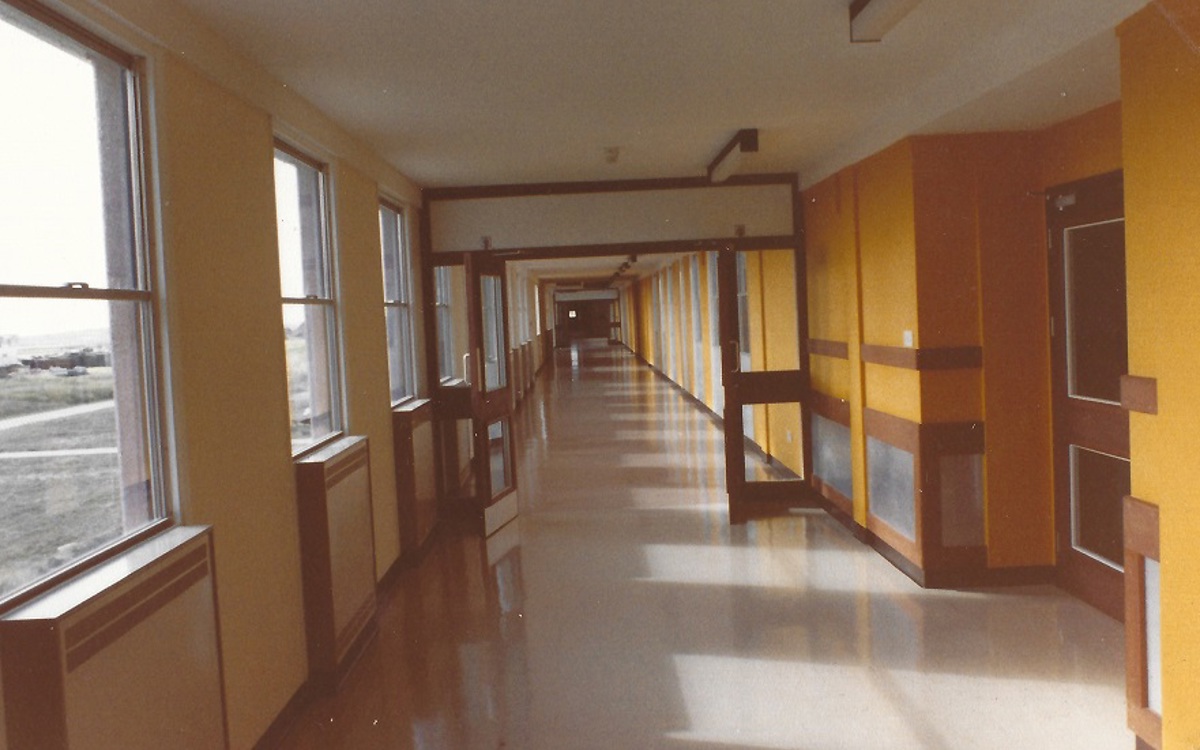Our beginnings

The James Paget celebrated the 40th anniversary of the hospital’s official opening in 2022.
The new district general hospital for the Great Yarmouth and Waveney area was formally opened in July 1982 but had actually been receiving patients since 21 December 1981, when the first emergency cases were accepted and outpatient clinics started.
The hospital was formally opened by Professor Dorothy Crowfoot Hodgkin, OM, FRS, a Nobel Prize-winning scientist, who spent her early life near Beccles.
Construction of the first phase of the hospital had taken place between September 1976 and August 1981 and the contract cost was £8million – equivalent to over £40 million in 2022.
Further phases took place between February 1982 and December 1984 and this work included the creation of Wards 7, 8, 9, 10, 11, 12, 14, our Department of Medicine and Rehabilitation.
The Paget wasn’t named until September 1984 when, after much debate, the District Health Authority voted by a narrow margin (8 to 7) to formally name the hospital after Great Yarmouth born surgeon to Queen Victoria Sir James Paget (1814-1899).
The site itself, on the outskirts of Gorleston, between Great Yarmouth and Lowestoft, has evidence of prehistoric and Roman activity.
Aerial photography held by the Norfolk Museums Service has shown the likely remains of a Bronze Age barrow by the hospital site. Barrows can be identified as round mounds, often surrounded by a ‘ring ditch’ from which the earth and stone for the mound was dug. There were primarily burial places but were also used for carrying out the many other community rituals.
More recently, the site was heavily defended in World War Two, with a searchlight battery located just to the west of the hospital and a heavy anti-aircraft battery to the east.
In June 1953, a United States Airforce jet fighter - a North American Sabre - based at RAF Bentwaters, near Woodbridge - caught fire and crashed on what is now the hospital car park.
Once just an empty field, sandwiched between Woodfarm Lane and the main road linking Lowestoft and Great Yarmouth, in the late 1970s, this parcel of land became home to one of the biggest construction sites on the East Coast as the James Paget took shape.


By the early 1970s there was a real need for a new hospital but the difficulty was where it should be built.
Situated between the two main population centres of Great Yarmouth and Lowestoft, Gorleston appeared to be the natural choice and what was agricultural land at the time was compulsory purchased for the building.
A team of planners from the Ministry of Health in London arrived in Norwich during 1973 to support the re-organisation of the Health District locally. Their task was abolishing the existing Norfolk Health Authority and setting up several shadow District Health authorities. This forms part of the background that led to plans for the new Great Yarmouth and Waveney District General Hospital.
Ministry of Health policy said that each Health District should have one large central hospital to meet general acute treatment needs and, after groundworks in 1976, in July 1977, RJ Carter was granted a contract to undertake the first phase of construction work.
You can watch a video below featuring Colin Wright, who was the Senior Engineer for Great Yarmouth Borough Council in the mid 1970s, who designed the sewers leaving the main hospital site.
The tunnelling works involved what is known as a thrust bore or ‘pipe jacking’ type construction - a form of trenchless technology - approximately 6m deep from the direction of what is now the Louise Hamilton Centre.
